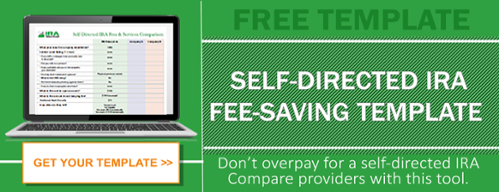The Ultimate Wealth Building Strategy for Real Estate Investors
What was your reaction the first time you heard about self-directed IRAs? Sounds good, you may have thought, yet something stopped you. Perhaps it sounds complicated. You don’t have enough saved. Your strategy for investment growth is great, so why change it? But what if you knew that self-directed IRAs are not complicated. You can bring in partners to fund more deals or get a bigger property. And, an investment strategy that delivers tax-free growth is always worth considering.
It’s all true and allowed in self-directed retirement plans. Unlike the real estate you purchase with regular income, the market value of real estate purchased with a self-directed IRA grows tax-free or tax-deferred. Put another way: There are no capital gains. When you sell a property owned by your IRA, the profits from the sale go back into the IRA and you are not be taxed on the profits at the time of the sale. That’s because the IRA is in a tax-deferred environment; it is not taxed until you take distributions.
That all sounds great, but I don’t have enough in my IRA.
And you are not alone. Savvy real estate investors leverage their expertise to grow their retirement accounts faster by using self-directed IRAs to purchase rentals or fixer-uppers. Some bring in partners to buy larger properties. Partnering allows real estate investors to pool funds and purchase commercial real estate for example.
When you bring in a partner, the property is held in the name of the IRA, and the partner and the income and expenses are shared between the IRA and the partner. If the property needs repairs or there are expenses to be paid, the money comes out of the IRA, with the partner contributing his share according to his ownership percentage. When the property is sold, the funds are divided in the same manner.
Depending on your income, employment, or tax situation, you have a choice of IRAs you can use to start saving. You can put away from $5,500 to 25% of your income per year depending on the plan. Research the plans available to individuals or small business owners and get a recommendation from a financial professional for a plan that fits your needs. Also, if you have an old 401(k) from a previous employer, you can transfer that money to a self-directed IRA.
What’s the catch?
You can partner with personal funds, with other investors (as long as they are not disqualified persons, as defined by the IRS), and even get a loan for your IRA.
But you must follow the rules. Investing in real estate with a self-directed IRA is for the benefit of your retirement not you personally. That means that you cannot take personal benefit from a property by living in it, vacationing in it, or renting it out to your child or offer discounted rent to a friend. If you break these rules the account stops being a tax-advantaged IRA and the assets it contains are distributed to you at market value. This can cause significant tax consequences. It is important to understand these and other rules before engaging in any self-directed IRA transaction.
The other important thing to know is that you will need a self-directed IRA administrator for your retirement account. Most investment banks do not allow real estate in the retirement saving products they promote. That is where we come in. IRA Resources has been helping real estate investors purchase of real estate with IRA funds since 1996. To learn more about how we make it easy to invest in real estate with an IRA, contact us.









Comments (3)